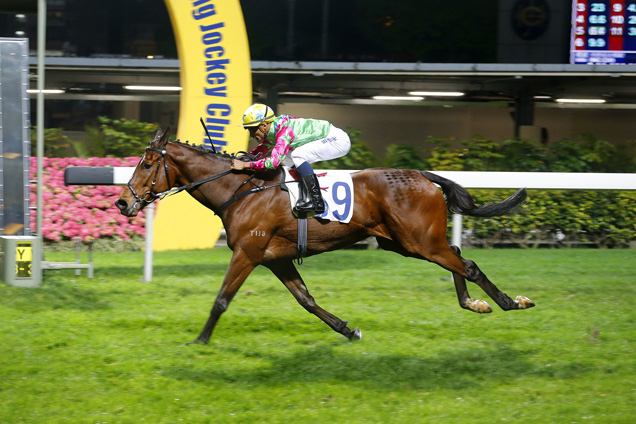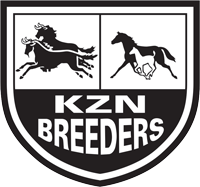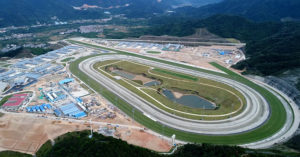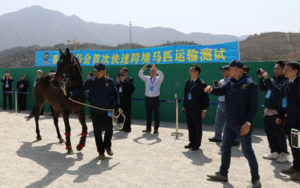
They say every cloud has a silver lining and while a storm has been silently brewing in the international Thoroughbred trade, it may offer hope to the beleaguered SA bloodstock industry.
For many years, Hong Kong has played an integral role in the Australian Thoroughbred industry, supporting their bloodstock sales, racing and simulcast programme, hosting Australian horses and riders at international race meetings, as well as repatriating Thoroughbreds to Australia at the end of their racing careers. However, a recent decision by Australia’s Department of Agriculture and Water Resources (DAWR) altering Hong Kong’s quarantine status to require a 180 day third country quarantine before allowing Hong Kong horses entry to Australia, is posing difficulties.
What It’s All About
Going back to 2009, the Hong Kong Jockey Club developed and built a centre for the equestrian events of the 2010 Asian Games, across the border in China, in the Conghua district of Guangzhou.
To allow the site to be used for the 2010 Asian Games, Conghua was established as an equine disease free zone, recognised by the EU Commission. There were pre-export quarantine requirements in the country of origin as well as post arrival quarantine and horses were subject to the same pre-export quarantine on their way out. During the Games, the site successfully hosted 95 horses from 16 different participating countries. All the horses travelled in through Hong Kong, travelled along the corridor to Conghua where they were based for the duration of the Games and then travelled back to exit from Hong Kong on their way out.
Hong Kong Expansion
Shortly after the Games, the Hong Kong Jockey Club embarked on a large scale project to turn the site into a full-scale training centre with a capacity for up to 1200 horses, allowing the HKJC to expand its operations and, more specifically, its horse population. Site development works commenced in 2011.
Although the physical distance between Hong Kong’s Sha Tin and the new Conghua facility is not vast, the fact that they are separated by an international border and that the only veterinary facilities are at the points of origin and destination, has meant that the HKJC has had to develop some pretty sophisticated horse transport solutions, including high tech transport protocols and quarantine facilities and even custom designing horse boxes for the journey.
Similarly to the South African model, the Hong Kong/China protocol operates on the concept of zones with an outer, inner and an inner core area. It is touted as being particularly secure as the outer zone (which covers over 2000 sq km) is completely free of any local horses. Within that zone, there is a 5km radius core area, also horse free, which also presents a physical barrier to prevent entry from any other animals and then there’s the Conghua facility itself. Significantly, when a horse is transported from Hong Kong to Conghua, there is no possibility of it coming into contact with any local horses whatsoever.
Unexpected Challenge
With the project well under way and the Conghua Training Centre (CTC) scheduled to open in late 2018, transport trials commenced in February 2016. Initial trials were conducted using retired racehorses and the first trial saw close collaboration between Hong Kong government officials as well as Mainland China authorities and horses travelling in government authority GPS monitored vehicles. There have been 6 successful subsequent trials since February 2016.
In March 2016, the Hong Kong authorities contacted the Australian chief veterinary officer to inform him of the trial and explain the process, as well as setting out the ultimate objective of realising regular movement between the two centres once Conghua is operational. However, in September 2017, the Australian government’s Department of Agriculture and Water Resources (DAWR) announced it would be altering the quarantine status of Hong Kong, due to the Jockey Club’s Conghua training centre in China becoming a part of the general Hong Kong bio environment. The change requires any horses travelling from Hong Kong to Australia to undergo a 180 days third country quarantine before being allowed access to Australia. This came into effect on 2 October 2017.
The reason for the suspension is that the Australian authorities want to carry out an assessment of the movement controls to satisfy themselves that they pose no risk to the Australian horse population. And until such time as an assessment can be carried out by them, the suspension remains in place and effectively excludes free travel of horses between Australia and Hong Kong and, by extension, mainland China.
Hong Kong ownership

As horse numbers are limited by the space available at Sha Tin, Hong Kong caps the number of ownership permits per year. In anticipation of the Conghua facility coming into operation later this year, the number of permits has risen from 330 in 2017 to 440 for the current season and as Conghua develops, that number is set to increase.
In order to buy a horse, a Jockey Club member needs to have a permit. Applications are made each year for the available permits and as demand always outstrips supply, a ballot is conducted to determine the allocations. Once in possession of a permit, the member may then go and buy a horse. The Hong Kong Jockey Club has a list of approved countries from which horses may be purchased and members may choose between buying unraced or raced horses.
Although purchasing and importing horses from Australia to Hong Kong is unaffected by the suspension, it does hamper raiding horses travelling between the two countries as well as repatriation of horses at the end of their careers, which, due to space constraints, in turn affects the acquisition of new bloodstock into Hong Kong.
Uniquely positioned
By happy coincidence, Hong Kong developed its interest in the South African market some three years ago, based on the quality and value of SA-bred horses. Of course, South Africa comes with its own basket of issues, thanks to African Horse Sickness and our export protocols, but the good news is that for the past few years, Hong Kong has been on board in assisting us in getting these ironed out.
Through his role as Vice-Chairman of the International Federation of Horseracing Authorities (IFHA), HKJC CEO Winfried Engelbrecht-Bresges has promoted an organised approach in finding solutions to existing difficulties in international horse movement. With our African Horse Sickness issue and onerous export protocols, South Africa has been earmarked as one of the areas needing attention. Additionally, the International Horse Sports Confederation (IHSC) which is a collaborative grouping of the IFHA (racing) and the FEI (competitive sports body), makes an annual financial contribution to the World Organisation for Animal Health (OIE)’s equine programme. A large portion of this funding is allocated to research and luckily for South Africa, finding a solution for African Horse Sickness has been identified as an area that merits funding – which is very positive news in our fight against AHS.
If a viable export solution can be found, South Africa may be uniquely placed to step into the breach currently left by Australia.
Global Sprint Challenge
The Hong Kong / Australian movement suspension needs to be unravelled at Government level and dialogue is taking place to release the deadlock. However, the suspension currently remains in place and signs of strain are starting to show, as evidenced with the cancellation of this year’s Global Sprint Challenge Series.
The Global Sprint Challenge (GSC) series, inaugurated in 2005 to foster international competition between top sprinters from different international racing jurisdictions, includes Australian Group One races the Lightning Stakes in February and Darley Classic in November, and the Chairman’s Sprint Prize and Hong Kong Sprint at Sha Tin.
With four of the 10 races scheduled for either Australia or Hong Kong, this makes them off limits for horses from either jurisdiction, resulting in the suspension of the series for 2018.
Mounting pressure
In addition, Hong Kong Jockey Club officials chose not to attend this month’s Magic Millions Gold Coast Yearling Sale in Australia. This poses a significant loss to the Australian bloodstock industry as the HKJC spent more than HK$16 million (A$2.6 million) at the 2017 January sale and had an even bigger budget for this year.
Engelbrecht-Bresges is quoted as saying that the Club would assess whether to attend other Australian sales on a “month by month” basis. They may also consider withdrawing simulcast meetings from Australia, a rich source of revenue for Australian racing clubs. “We’ve regretfully taken this step and we are not trying to punish the Australian industry, but there was no clear pathway or timeline,” Engelbrecht-Bresges said.
The coin toss of circumstance is two sided and while one side poses a challenge, the other offers opportunity for those willing to grab it. If an export solution can be found, South Africa will be well positioned as an interesting, as well as an economical, alternative to Australia as a source of bloodstock.
As they say, watch this space.
-Robyn Louw / sportingpost.co.za
*KZN-breds in Hong Kong include Monsieur Mogok and Kahal gelding, Mighty Emperor, Eton Square and Vilakazi and Gr2 winner, Horse Of Fortune.



